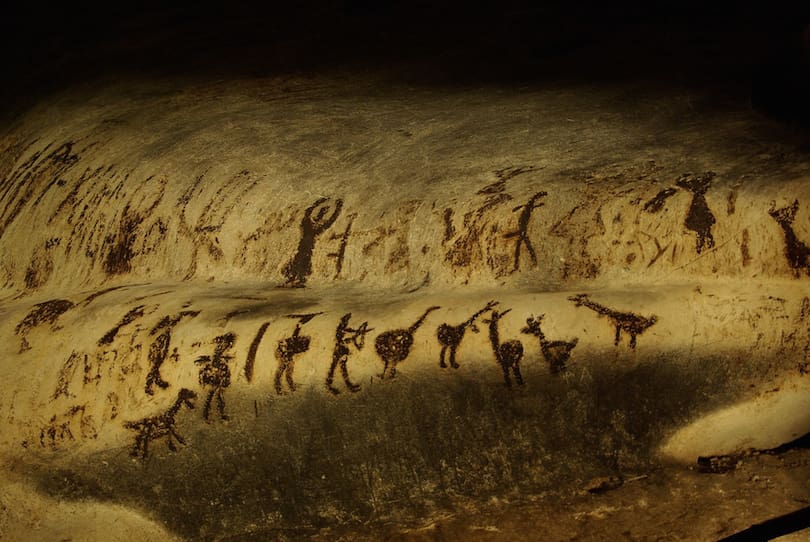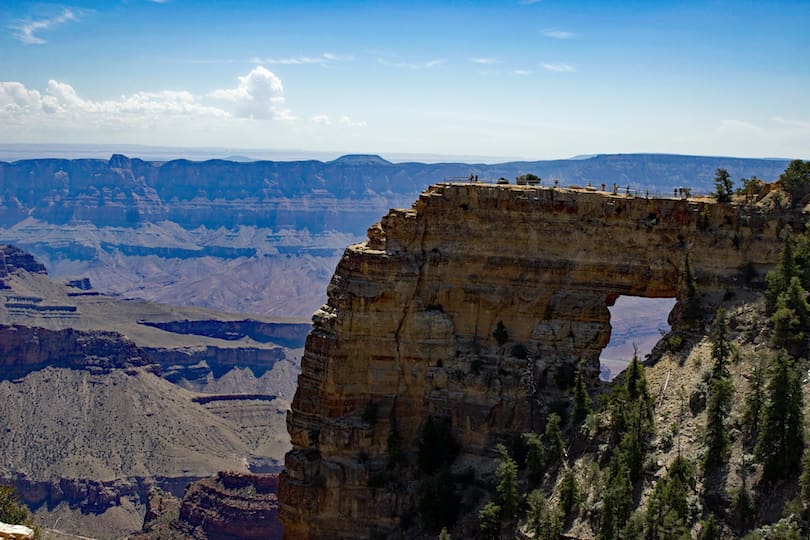From the earliest times, humans have been fascinated with creating art. Cave paintings, in particular, provide a unique glimpse into the lives and minds of our prehistoric ancestors. In this article, we’ll take a look at 10 of the most intriguing prehistoric cave paintings ever discovered, exploring their history, meaning, and significance.
The History of Cave Painting
Cave painting is a form of prehistoric art that dates back thousands of years. The first known cave paintings were discovered in Lascaux, France in 1940. Since then, dozens of other cave painting sites have been discovered around the world.
Prehistoric cave paintings were created using a variety of techniques, including finger painting, blowing paint through a tube, and using animal hair as a brush. They were made using a variety of materials, including charcoal, ochre, and other pigments.
The Lascaux Cave Paintings
The Lascaux Cave Paintings are some of the most famous and well-preserved prehistoric cave paintings in the world. They were discovered in 1940 by a group of teenagers exploring a cave in Lascaux, France.
The paintings depict a variety of animals, including horses, bulls, and deer, as well as human figures. They were created using a variety of techniques, including finger painting and blowing paint through a tube.
The Altamira Cave Paintings
The Altamira Cave Paintings, also known as the “Sistine Chapel of Prehistoric Art,” are located in northern Spain. They were discovered in 1879 by a local archaeologist.
The paintings depict a variety of animals, including bison, deer, and horses. They were created using a variety of techniques, including finger painting and using animal hair as a brush.
The Chauvet Cave Paintings
The Chauvet Cave Paintings, located in southern France, were discovered in 1994 by three spelunkers. They are some of the oldest known cave paintings in the world, dating back over 30,000 years.
The paintings depict a variety of animals, including lions, mammoths, and rhinoceroses, as well as human figures. They were created using a variety of techniques, including finger painting and blowing paint through a tube.
The Cueva de las Manos Paintings
The Cueva de las Manos Paintings, located in Argentina, are some of the most well-preserved prehistoric cave paintings in the world. They were created by the indigenous peoples of the region between 13,000 and 9,000 years ago.
The paintings depict a variety of animals, as well as human handprints. They were created using a variety of techniques, including finger painting and blowing paint through a tube.
The Cosquer Cave Paintings
The Cosquer Cave Paintings, located in southern France, were discovered in 1985 by a diver named Henri Cosquer. The paintings were created during the Upper Paleolithic period, between 27,000 and 19,000 years ago.
The paintings depict a variety of animals, including horses, bison, and seals. They were created using a variety of techniques, including finger painting and blowing paint through a tube.
The Pech Merle Cave Paintings
The Pech Merle Cave Paintings, located in southwestern France, were discovered in 1922 by two teenagers. The paintings date back over 25,000 years and are some of the best-preserved prehistoric cave paintings in the world.
The paintings depict a variety of animals, including horses, mammoths, and bears, as well as human figures. They were created using a variety of techniques, including finger painting and blowing paint through a tube.
The Niaux Cave Paintings
The Niaux Cave Paintings, located in southwestern France, were created during the Upper Paleolithic period, between 15,000 and 10,000 years ago. The paintings were discovered in 1906 by a local archaeologist.
The paintings depict a variety of animals, including horses, bison, and ibex. They were created using a variety of techniques, including finger painting and blowing paint through a tube.
The Bhimbetka Cave Paintings
The Bhimbetka Cave Paintings, located in central India, were discovered in 1957 by an archaeologist. The paintings were created by the indigenous peoples of the region between 30,000 and 10,000 years ago.
The paintings depict a variety of animals, including elephants, tigers, and rhinoceroses, as well as human figures. They were created using a variety of techniques, including finger painting and using animal hair as a brush.
Conclusion
Prehistoric cave paintings provide a fascinating glimpse into the lives and minds of our ancestors. The 10 cave paintings discussed in this article are just a small sample of the many amazing prehistoric artworks that have been discovered around the world. From the stunning realism of the Lascaux Cave Paintings to the ancient handprints of the Cueva de las Manos Paintings, these artworks serve as a testament to the incredible creativity and ingenuity of early humans.
FAQs
- What is the oldest cave painting in the world?
- The oldest known cave painting in the world is a red hand stencil found in El Castillo cave in Spain, dating back over 64,000 years.
- Why did prehistoric humans create cave paintings?
- The exact reasons why prehistoric humans created cave paintings are unknown, but theories suggest they may have had religious or ceremonial significance, served as a form of communication, or were simply created for artistic expression.
- How were prehistoric cave paintings made?
- Prehistoric cave paintings were made using a variety of techniques, including finger painting, blowing paint through a tube, and using animal hair as a brush. They were made using a variety of materials, including charcoal, ochre, and other pigments.
- Why were caves chosen as sites for prehistoric art?
- Caves were likely chosen as sites for prehistoric art due to their relative stability and shelter from the elements. They may have also had spiritual or ceremonial significance.
- What can we learn from prehistoric cave paintings?
- Prehistoric cave paintings provide a unique window into the lives and cultures of our early ancestors. They can offer insights into their artistic and spiritual practices, as well as their relationships with the natural world.
















Thanks for sharing excellent informations. Your website is so cool. I am impressed by the details that you’ve on this blog. It reveals how nicely you understand this subject. Bookmarked this website page, will come back for extra articles. You, my pal, ROCK! I found just the info I already searched all over the place and just couldn’t come across. What a perfect site.
Thank you for another fantastic post. Where else could anyone get that kind of information in such a perfect way of writing? I have a presentation next week, and I’m on the look for such information.
Wow! Thank you! I continually needed to write on my website something like that. Can I implement a portion of your post to my blog?
where to buy amoxil without a prescription – amoxil tablets cheap generic amoxicillin
buy diflucan 100mg online cheap – https://gpdifluca.com/ fluconazole pill